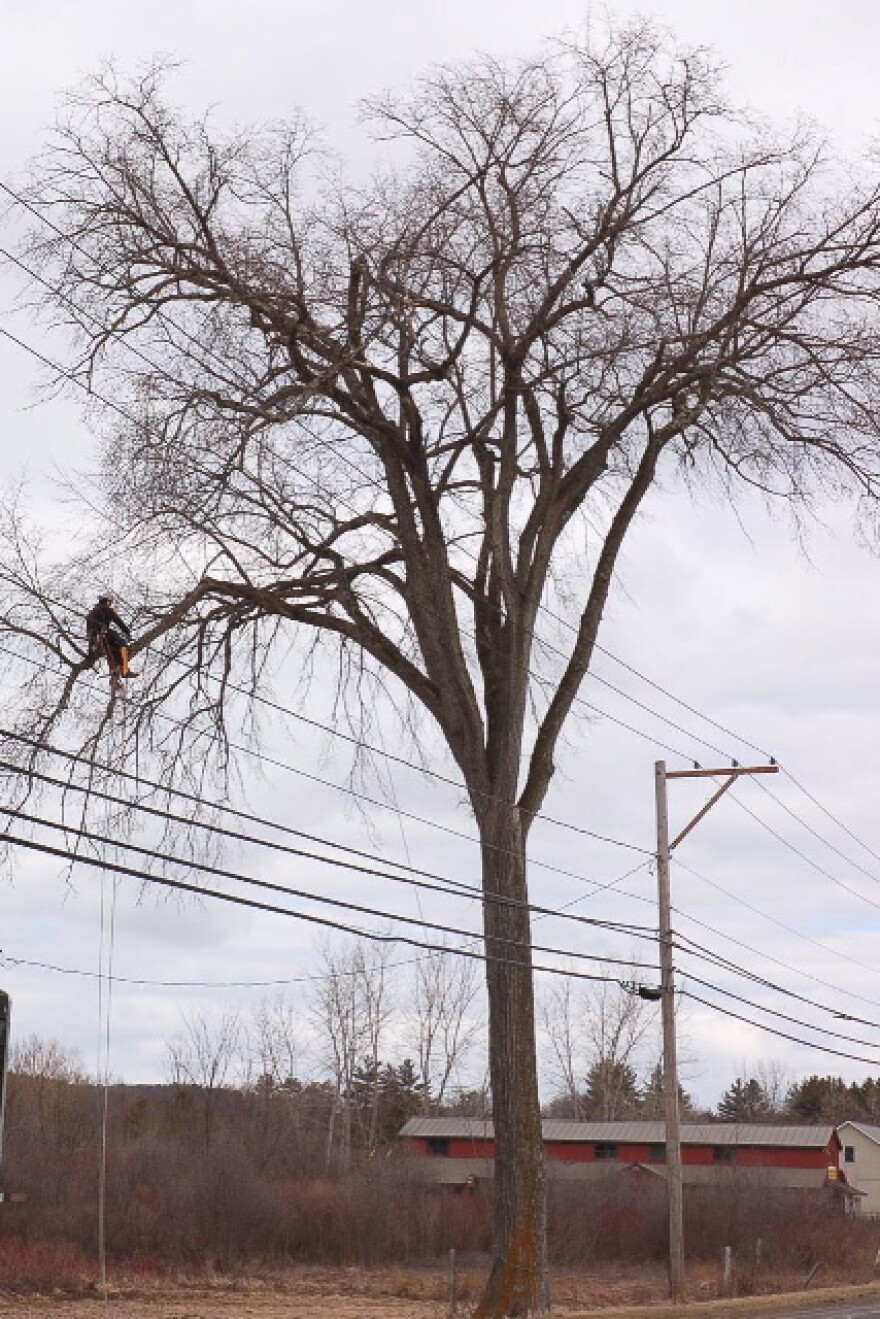A large tree in a small Berkshire town may hold the key to finding the cure to a disease that has deforested suburban landscapes for decades.
Jim McSweeney, a certified arborist from Chesterfield, Massachusetts, is standing with a pole saw under a massive elm tree along a sidewalk in Great Barrington. He’s taking of the samples of the twigs and buds that haven’t yet formed into flowers in the early spring.
McSweeney is contracting with the Nature Conservancy to take samples of select, large elm trees across the Northeast. Ecologist Christian Marks said that they are after survivors of Dutch elm disease.
Dutch elm disease is caused by an invasive fungus carried on the backs of beetles that feed on the twigs and bark of several elm species. Introduced from Europe in the1930s, the disease destroyed elms and shady streetscapes in the United States throughout the following decades. The streets of Albany were historically famous for their impressive elms.
An unaffected tree can live for hundreds of years. Marks said that elms will still grow in their native habitats and are especially common in the region, but the disease prevents most trees from reaching their former size.
“You’ll find lots of small elms - six inches in diameter or smaller. But around that size they’ll usually get Dutch elm disease and die,” said Marks. “You never get big ones anymore.”
Tom Zetterstrom, Founder of the Great Barrington-based organizations, Elm Watch, says that only a small percentage of large elms planted in American cities remain.
“About 1 or 2 percent of elms survived Dutch elm disease,” said Zetterstrom.

Marks will send the sampled twigs and buds to the U.S. Forest Service in Ohio, where they will cross-pollenate with other resistant trees, in hopes that the resulting seeds will produce a new generation resistant elms.
Marks said it can take up to 10 years for a tree to be determined resistant. The Nature Conservancy is just one of the groups around the country trying to ensure the survival of an important part of America’s ecosystems and history
“The disease is always evolving,” said Marks. “We want the elms to keep up with that evolution.”



